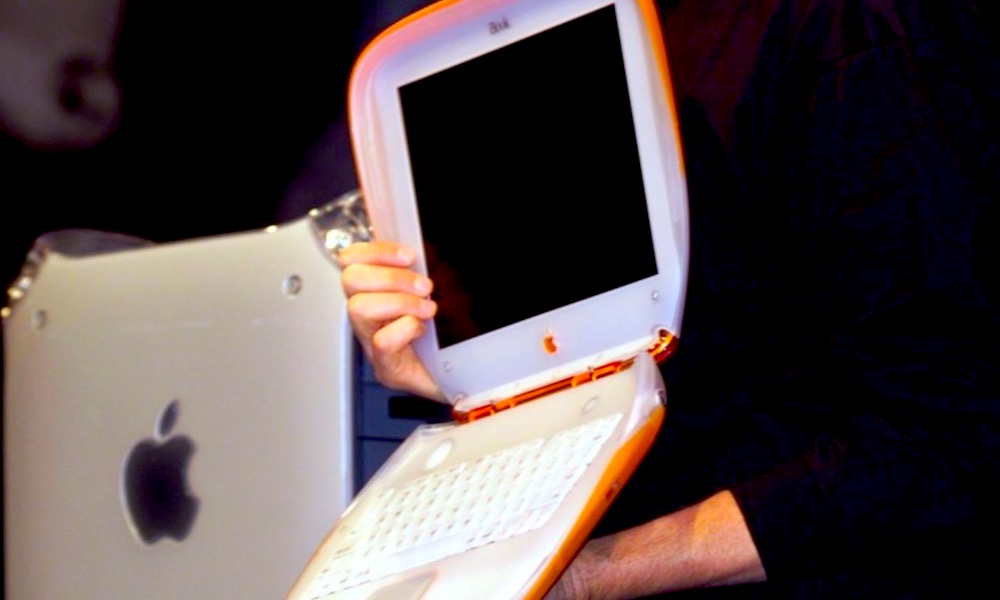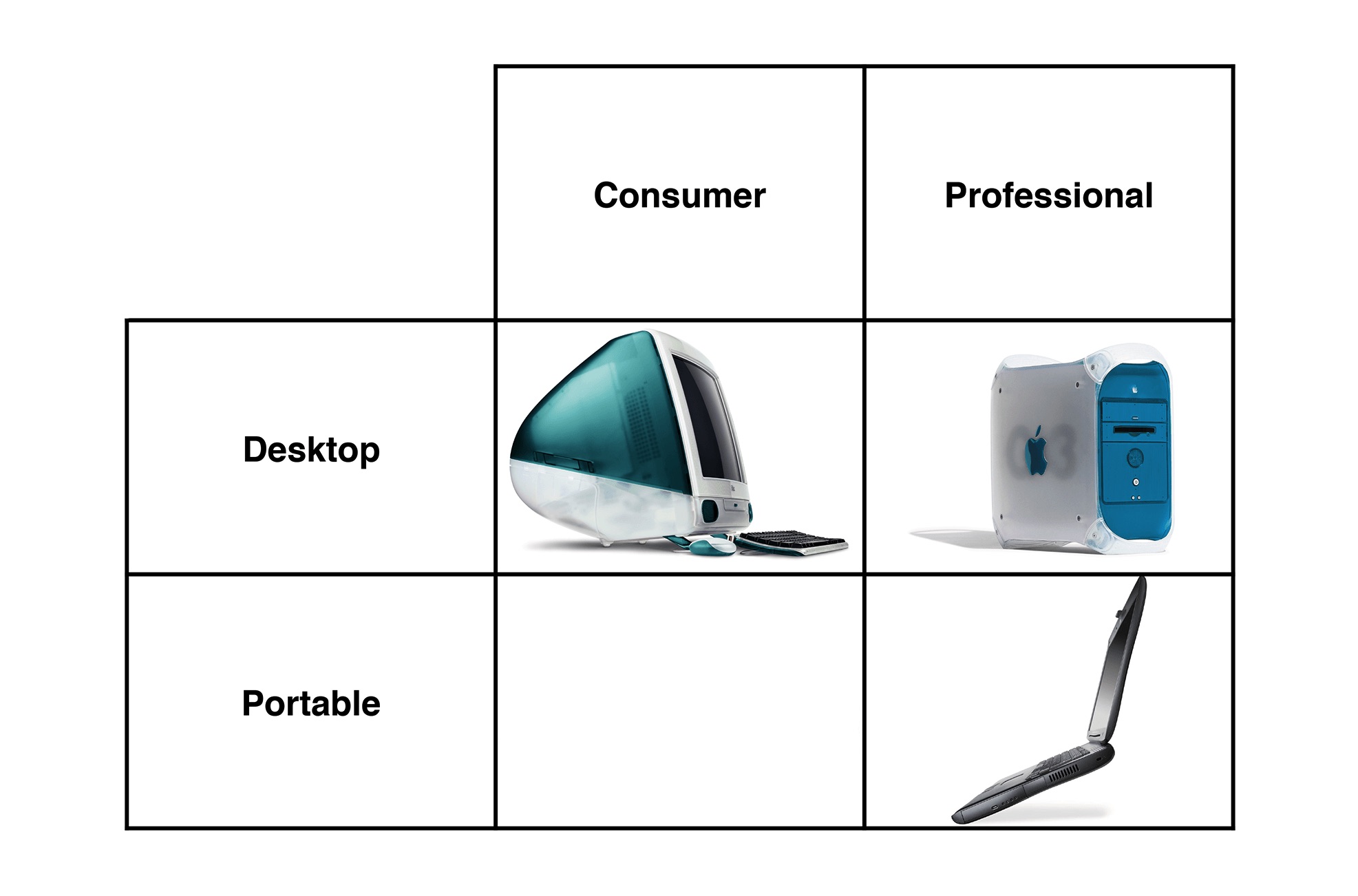Do You Like Wi-Fi? Thank Apple’s iBook, Released 20 Years Ago This Week
 Credit: Maccity
Credit: Maccity
Toggle Dark Mode
Could you imagine life today without Wi-Fi or cellular data? Well, until Apple released its first consumer-focused laptop 20 years ago, life without either of those technologies was the reality. That laptop was the iBook, and it would not be an exaggeration to say that it changed Apple, wireless connectivity, and the entire technology industry for good.
The iBook
When Steve Jobs returned to Apple in the late 1990s, he famously drew a 2×2 grid on a whiteboard in an effort to simplify the firm’s messy lineup. There was one box each for a pro desktop, pro portable, consumer desktop and consumer portable.
The last addition to Apple’s product lineup at the time was the iBook, its consumer portable. Save Jobs officially unveiled the device 20 years ago this week at the Macworld Expo in 1999 in New York City.
Apple’s iBook definitely made a splash when it debuted. Unlike the boxy and boring laptops of its era, the iBook stood out. It sported a unique clamshell design with translucent plastic. It also came in a variety of colors, such as Blueberry and Tangerine.
It packed a 12.1-inch display with a resolution of 800×600, a 300 MHz chipset, 32MB of RAM, and a 3.2GB hard drive. While it was fairly heavy at 6.7 pounds, it featured a retractable handle, prompting Apple to call it an “iMac to go.”
Interestingly, the first iBook was priced at $1,599. Adjusting for inflation, that would be about $2,500 today. That’s more than any base tier laptop in Apple’s current MacBook lineup.
Initially aimed at students and consumers, the iBook was extremely well-received. But aside from its unique and colorful design, the iBook’s real legacy was the birth of Wi-Fi as a consumer feature.
Yes, the iBook was the first mass-produced laptop on the market to feature Wi-Fi.
The Advent of Consumer-Facing Wi-Fi
The iBook, which featured Wi-Fi support as an optional upgrade, launched at a time when wired connectivity (and dial-up) was the norm.
Users who wanted to take advantage of the 802.11b standard (also known as Wi-Fi) needed to purchase an optional $99 AirPort wireless card and a $299 AirPort base station. But if they did, they could take connect to the internet wirelessly.
When Steve Jobs unveiled the device, he famously picked it up and walked across the stage while loading a website — a move that was greeted with cheers from the audience. He even put the iBook through a hula hoop to prove that there were no wires attached.
At the time, Jobs claimed that Wi-Fi would eventually become an industry standard. It did.
But while consumer-facing Wi-Fi may have debuted on the iBook, it was a technology years in the making. It just took the right meeting with Apple executives to actually make it happen.
Lucent Technologies, a firm that spearheaded the development of Wi-Fi, had been “working for more than a decade” on popularizing it, with little luck. But “after plenty of attempts, Apple finally came to Lucent and said they wanted to meet.”
“Apple was looking for something different and new for their iBook laptop product, and Steve was very enamored by the idea of wireless connectivity for laptops,” Lucent executive Cees Links said of the meeting in an interview of Wi-Fi Now.
“Looking back, it seems to me he had probably made up his mind even before the meeting,” he added.
From there, you can probably trace a direct line from Wi-Fi on the iBook to cellular data on the iPhone. And while the iBook has been obsolete for more than a decade now, there’s no doubt that its impact on wireless connectivity and the technology industry as a whole is still felt today.







